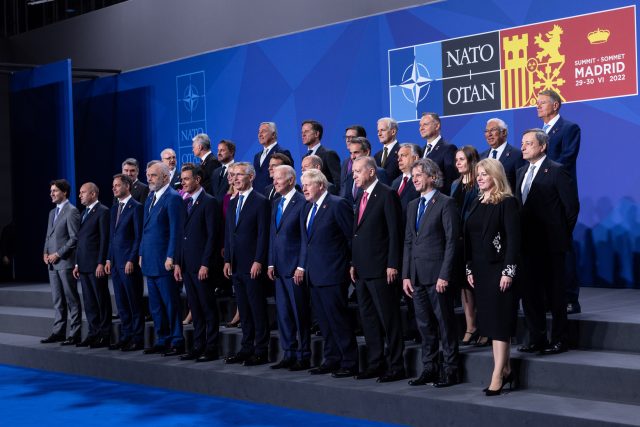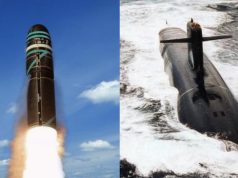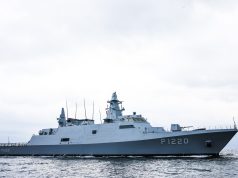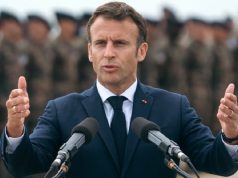NATO leaders have just taken decisions to transform and strengthen our Alliance at this pivotal time for our security.
President Putin’s war against Ukraine has shattered peace in Europe. And has created the biggest security crisis in Europe since the Second World War.
NATO has responded with strength and unity.
And President Zelenskyy’s leadership and courage are an inspiration to all of us.
I am pleased that he could join our meeting today.
President Zelenskyy made clear that Ukraine relies on our continued support.
And our message to him was equally clear.
Ukraine can count on us.
For as long as it takes.
Allies will continue to provide major military and financial help.
And today, leaders agreed to strengthen our support by agreeing a Comprehensive Assistance Package for Ukraine.
This includes secure communications, fuel, medical supplies, and body armour.
Equipment to counter mines and chemical and biological threats.
And hundreds of portable anti-drone systems.
Over the longer-term, we will help Ukraine transition from Soviet-era equipment to modern NATO equipment.
Boost interoperability. And further strengthen its defence and security institutions.
All of this shows our commitment to Ukraine’s future, and that our commitment is unshakeable.
A strong, independent Ukraine is vital for the stability of the Euro-Atlantic area.
Today, NATO leaders decided a fundamental shift in our defence and deterrence to respond to a new security reality.
We will strengthen our forward defences.
We will enhance our battlegroups in the eastern part of the Alliance, up to brigade level.
We will transform the NATO Response Force.
And increase the number of high readiness forces to well over 300,000.
We will also boost our ability to reinforce, including with:
- More pre-positioned equipment, and stockpiles of military supplies.
- More forward-deployed capabilities, like air defence.
- Strengthened command and control.
- And upgraded defence plans, with forces pre-assigned to defend specific Allies.
This is the first time since the Cold War that we have these kind of plans with pre-assigned forces.
They will work with home defence forces, and become familiar with local terrain, facilities, and pre-positioned stocks.
So that we can reinforce even faster.
Doing more will cost more.
Today, Allies recommitted to the pledge we made in 2014 to spend at least 2% of GDP on defence.

Since 2014, European Allies and Canada have spent an extra 350 billion U.S. dollars.
Nine Allies now reach – or exceed – the 2% target.
Nineteen Allies have clear plans to reach it by 2024.
And an additional five have concrete commitments to meet it thereafter.
Two percent is increasingly seen as a floor, not as a ceiling.
Allies are also investing more in modern capabilities.
Contributing more to NATO deployments and exercises.
And we have agreed to increase NATO’s common funding.
To finance the facilities we need for reinforcement. As well as more training and more exercises, command and control, and engagement with partners.
We face a radical change to our security environment.
And strategic competition is rising around the world.
So today, leaders have endorsed NATO’s new Strategic Concept.
And it is published as we speak.
https://www.nato.int/strategic-concept/
This is the new Strategic Concept. The current one was agreed in 2010 and this is very different from what we agreed back then.
It makes clear that Russia poses “the most significant and direct threat” to our security.
In the current concept, we state that Russia is a “strategic partner”.
In the current concept, we do not mention China with a single word.
In this, Allies state that China’s coercive policies “challenge our interests, security and values”.
The Concept also sets out our joint position on countering terrorism, as well as cyber and hybrid threats.
Today, we took other important steps to continue our adaptation.
We are launching the NATO Innovation Fund.
Backed by Allies, it will invest 1 billion euros in start-ups and funds developing dual-use emerging technologies, such as artificial intelligence.
Together with NATO’s Defence Innovation Accelerator for the North Atlantic – or DIANA – the new fund will harness the best new technology for transatlantic security.
Climate change is a defining challenge of our time. And NATO is committed to playing our part in mitigating the impact on our security.
Today, we agreed a new methodology to map military greenhouse gas emissions. And we agreed concrete targets to cut NATO emissions.
Our aim is to cut emissions by NATO bodies and commands by at least 45% by 2030. And move towards Net Zero by 2050.
This is an important step for our Alliance.
We cannot choose between having green militaries or strong militaries. They must be both.
So we must maintain our operational effectiveness and readiness as we continue to adapt.
In a more dangerous and competitive world, we must work even more closely with like-minded nations and organisations.
This afternoon, our Indo-Pacific partners Australia, Japan, New Zealand, and the Republic of Korea will take part in a NATO Summit for the first time.
We will also be joined by the European Union, Finland, Georgia, and Sweden.
Today, NATO leaders took the historic decision to invite Finland and Sweden to become members of NATO.
The agreement concluded last night by Türkiye, Finland and Sweden paved the way for this decision.
I would like to thank Türkiye, Finland and Sweden for accepting my invitation to engage in negotiations to find a united way forward.
This has been hard work over many weeks, with multiple contacts at many different levels.
Senior officials have had two rounds of talks in Brussels under my auspices.
And last night, we met, President Erdoğan, President Niinistö, and Prime Minister Andersson, and we were able to reach the final agreement.
This is a good agreement for Türkiye.
It is a good agreement for Finland and Sweden.
And it is a good agreement for NATO.
And with that, I am ready to take your questions.
Natasha Bertrand (CNN): Thank you so much. So, I have two questions. The first is I’m wondering if you could talk a bit more about the meetings you’ve had over the day about ironing out the details of the new force model and that includes the question of permanent basing. And I’m wondering you know, Putin has said that Finland and Sweden’s memberships don’t pose a direct threat to Russia, but he has also warned them about becoming bases for NATO forces or equipment so I’m wondering whether NATO has any plans to put permanent bases in those countries now that they’ve been formally invited into the Alliance.
NATO Secretary General Jens Stoltenberg: First of all, the decision to invite Finland and Sweden to become members demonstrate that NATO’s door is open. It demonstrates that President Putin did not succeed in closing NATO’s door. NATO’s door remains open. And it also demonstrates that we respect the sovereign right of every nation to choose its own path. So we, of course, respected Finland and Sweden when they decided to stay out of NATO for many many years, but then also welcomed them and respected their decision to join NATO. NATO Allies have already stepped up and NATO has increased its presence in the Baltic, Nordic, region. Of course, when they become members, we can do even more together. What we will make sure with our presence is that we are able to defend all Allies including, of course, Finland and Sweden.
And this links to the first part of your question. When it comes to this fundamental shift in our deterrence and defence, this is about air, sea, land, cyber. But, when we speak about land, that entails, or is composed of, three main elements. Partly more forward presence. We will enhance, reinforce, the battlegroups that have already deployed up to brigade levels. So that’s more presence especially in the eastern part of the Alliance.
The second element is more pre-positioned equipment. We know, that actually to move people can go quite fast but to move heavy equipment, battle tanks, ammunition, fuel, all kinds of supplies, that takes time. So, if you have that pre-positioned, in place, then you can move in very quickly with the personnel. So, the second element on top of the increased presence will be more pre-positioned equipment. And then, on the top of that, we will have for the first time since the Cold War, pre-assigned forces, in of course their home countries, but these forces will then rotate in and out, they will train, they will learn how to operate together with the home forces, for instance, in the Baltic countries, or in Poland or other places in the Alliance. They will be familiar with the training, with the pre-positioned equipment and for instance, one example of this is what Germany just has announced that they are now pre-assigning, designating a specific brigade in Germany that will train and, of course, work together with their already German battlegroup in Lithuania and with more pre-positioned equipment then this German brigade has a specific responsibility and there are advantages because they have trained there and know the country, to reinforce and support Lithuania if needed.
So, these are the three elements. You can also look at the NATO Homepage, you can see more details there in the factsheet and then of course the announcements by different Allies today, is actually giving substance to the decisions that Allies have made today.
Iryna Somer (Interfax Ukraine): […] Secretary General, question for you. Coming back to President Zelensky’s address: what kind of reaction was from leaders in the room? Can you give a little more on this? What will be the main message to the Ukrainian people? Do you think it will be possible for Ukraine then, when this war will be over, to join NATO like Sweden and Finland without Membership Action Plan? Thank you.
NATO Secretary General: The message from the leaders in the meeting, in the room, was a very strong expression of support. And not only an expression of support, but actually they announced additional systems, weapons, equipment that Allies, NATO Allies are now delivering to Ukraine. Germany made announcements, Norway made announcements, and other countries made announcements for additional support, military support, to Ukraine. The Netherlands also made announcements on more heavy weapons to Ukraine. So partly, this is something we do, it’s a message of words, but also in deeds. But I think also it’s very clear that Allies are prepared for the long haul. Wars are unpredictable, but we have to be prepared for the long haul. And that was also the clear message to all of us in the room from President Zelensky and our answer was “yes, we are prepared”. Because they are fighting for their independence. But they’re also fighting for values which are important for NATO, fundamental for NATO: the sovereignty and territorial integrity of every nation. And therefore this matters for our security. Our focus now is to support Ukraine. This war will, as most other wars at some stage, end at the negotiating table. But it is important that Ukraine is able to get an agreement on their terms, which is acceptable for Ukraine. And therefore we know that there is a very close link between what they can achieve around the negotiating table and their strength on the battlefield and therefore our focus now is to support them on the battlefield with many different types of lethal and non-lethal support. That is the focus. And then of course we have demonstrated today that NATO’s door remains open. And we also reiterate the decision made in Bucharest on membership for Ukraine.
(Spanish television): Mr. Secretary General, welcome to Madrid. You don’t have a crystal ball. But I was wondering how much longer you think it’s gonna take for Finland and Sweden to join the NATO, since it’s a pretty urgent situation? Thank you very much.
NATO Secretary General: Well, so far this is the fastest accession process ever. Because Finland and Sweden applied for membership in May, and now at the end of June leaders invite them to become members and we will sign the Accession Protocol. And then what remains, of course, is the ratification in thirty parliaments. I cannot speak on behalf, or promise anything on behalf of, thirty different parliaments, but the message in the room is that throughout the Alliance there is a strong will to work with parliaments so they can do the ratification as soon as possible. So, this has moved fast so far, and of course I expect that the Allies are ready to also ratify as soon as possible, but there are different procedures in different countries so this will take some times in different parliaments.
David Akin (Global News Canada): Thank you very much, Secretary General, David Akin, Global News. You were very gracious greeting the Canadian Prime Minister today. Secretaries General before you they’ve been very gracious greeting Canadian Prime Ministers, but our spending is just awful. It decreased if you measure by GDP decreased in absolute terms, we’re nowhere near the 2%. It’s not your place. But I wonder, how might you convince a Canadian public, a Canadian politician, to spend more on defence and secondarily what then might a medium or smaller military power do, contribute, with some of this new focus, new spheres of influence, in China? In Asia? As well as the urgent crisis here in Europe? Thank you.
NATO Secretary General: Of course, I expect all Allies to meet the guidelines that we have set and we agreed them back in 2014 for the decade up to 2024. And since then, the world has just become more dangerous. And I have been a politician myself for many years. And I understand that it’s always easier to invest in health in education and infrastructure, instead of allocating money for defence. That’s very easy to understand. That was the reason why NATO Allies reduced defence spending after the end of the Cold War, but if we reduce defence spending when tensions are going down, we have to be able to increase defence spending when tensions are going up, and when we live in a more dangerous world. I therefore welcome the fact that all NATO Allies have increased defence spending and added a lot. Not all allies have plans in place to be at 2% by 2024. But the vast majority have such plans and more and more Allies are actually meeting the 2% target or very close. So of course, this is a message to all Allies, including Canada. At the same time, also, I welcome the fact that Canada and other Allies are providing a lot of capabilities, contributions to NATO missions and operations. And Canada leads the Battlegroup in Latvia. I’ve been there together with Prime Minister Trudeau and also with the defence and the foreign minister, and I also welcome the fact that Canada is now stepping up its presence in Latvia. And of course, this also counts a lot when it comes to contributions to our collective defence.




